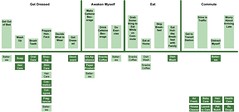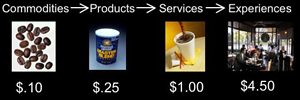One of the most important things I learned when becoming a product manager was being able to see my product as an equation. In the startup phase it’s easy, there’s just costs and they’re often tangible: people, hardware, software. Then you add marketing in various forms each with a different cost/revenue profile, then revenue streams and revenue sharing, then business overhead in myriad forms, and so on.
Developing a mental model of this equation (particularly the more volatile variables) and designing with that equation in mind is a fun part of managing a product. Maybe writing it down and posting it on the wall would be an educational tool for the team?





